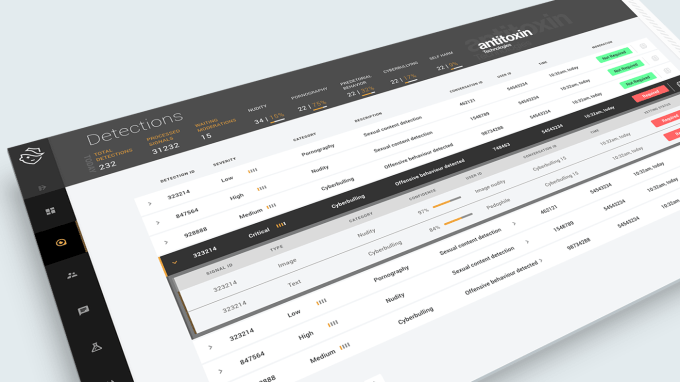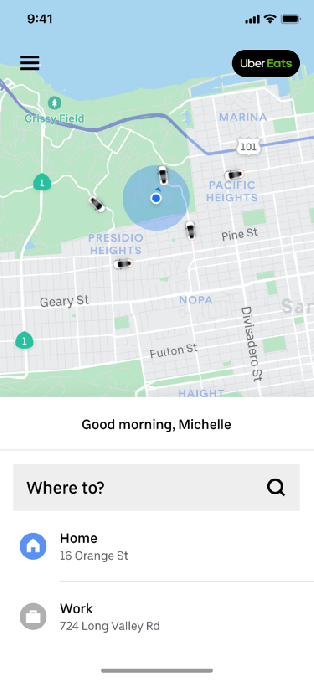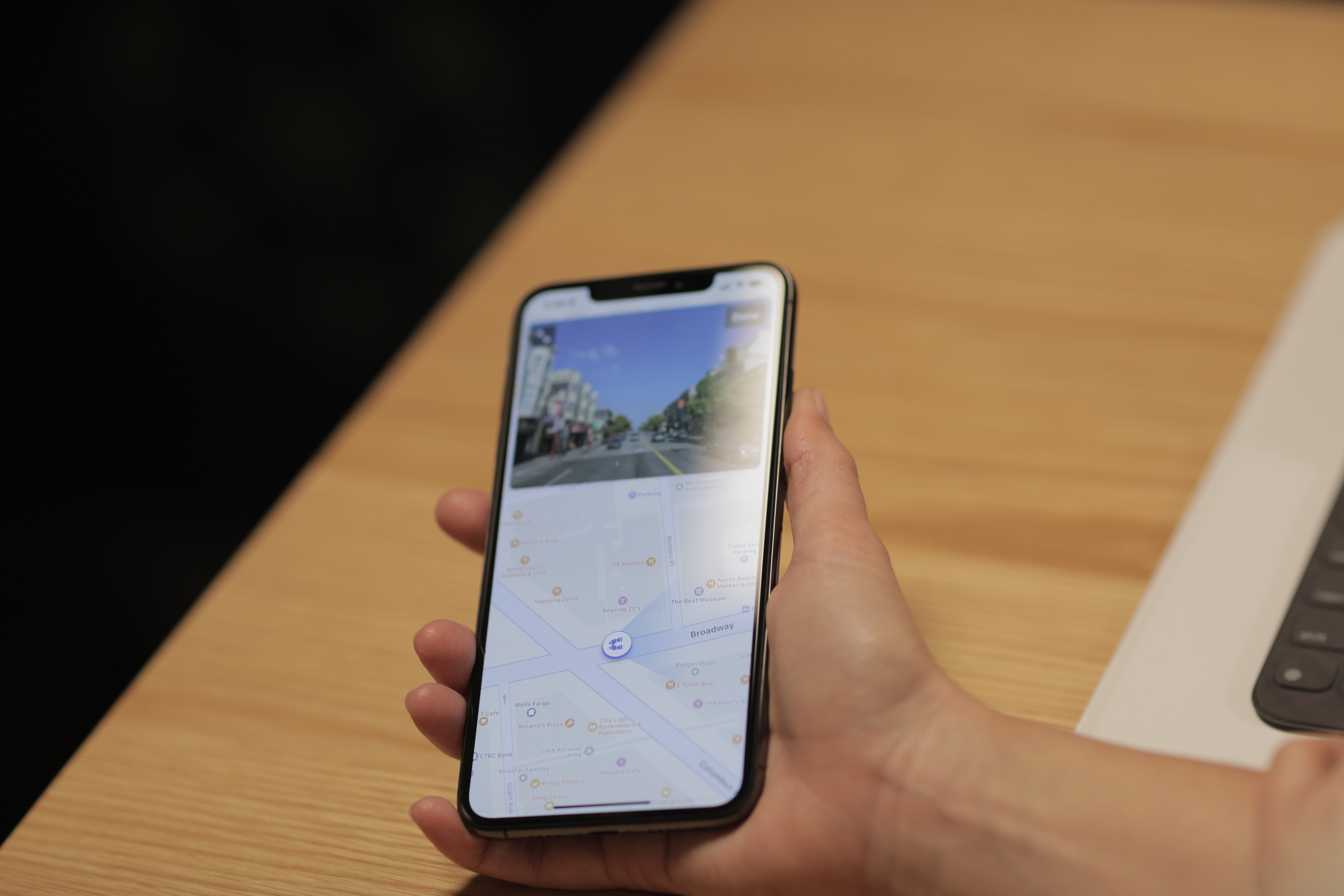Aion Network introduces first blockchain virtual machine for Java developers
Aion Network, a nonprofit dedicated to creating tools to promote blockchain technologies, announced a new virtual machine today that’s built on top of the popular Java Virtual Machine. Its ultimate goal is increasing the popularity of blockchain with developers.
Aion CEO Matthew Spoke says one of the barriers to more widespread blockchain adoption has been a lack of tooling for developers in a common language like Java. The company believed if they could build a virtual machine specifically for blockchain on top of the Java Virtual Machine (JVM), which has been in use for years, it could help promote more extensive use of blockchain.
Today, it’s announcing the Aion Virtual Machine (AVM), a virtual machine that sits on top of the JVM. AVM makes it possible for developers to use their familiar toolset while building in the blockchain bits like smart contracts in the AVM without having to alter the JVM at all.
“We didn’t want to modify the JVM. We wanted to build some sort of supplementary software layer that can interact with the JVM. Blockchains have a set of unique criteria. They need to be deterministic; the computing needs to happen across the distributed network of nodes; and the JVM was never designed with this in mind,” Spoke explained.
Aion set out to build a virtual machine for blockchain without reinventing the wheel. It recognized that Java remains one of the most popular programming languages around, and it didn’t want to mess with that. In fact, it wanted to take advantage of the popularity by building a kind of blockchain interpreter that would sit on top of the JVM without getting in the way of it.
“Rather than trying to convince people of the merits of a new system, can we just get the system they’re already familiar with on top of the blockchain? So we started engineering towards that solution. And we’ve been working on that since for about a year at this point, leading up to our release this week to prove that we can solve that problem,” Spoke told TechCrunch.
Up to this point, Aion has been focusing on the crypto community, but the company felt to really push the blockchain beyond the realm of the true believers, it needed to come up with a way for developers who weren’t immersed in this to take advantage of it.
“Our big focus now is how do we take this message of building blockchain apps and take it into a more traditional software industry audience. Instead of trying to compete for the attention of crypto developers, we want the blockchain to become almost a micro service layer to what normal software developers are solving on a day-to-day basis,” he said.
The company is hoping that by providing this way to access blockchain services, it can help popularize blockchain concepts with developers who might not otherwise have been familiar with them. It’s but one attempt to bring blockchain to more business-oriented use cases, but the company has given this a lot of thought and believes it will help them evangelize this approach with a wider audience of developers moving forward.
Powered by WPeMatico
Pokémon Sword and Shield arrive worldwide on November 15, 2019
Nintendo Switch has Pokémon games, but it doesn’t really have its own Pokémon games, not in the true sense. Pokémon Sword and Shield, coming November 15, 2019, will be the first real Pokémon games (don’t even mention Pokémon Let’s Go – don’t) for Nintendo Switch, and now we know more about them thanks to today’s Pokémon Direct livestream event from Nintendo.
Starting with the intro video, you can tell that Sword and Shield will be a full-fledged new extension of the Pokémon world taking place in the new Galar region – a fact emphasized by the theme song that played over it which featured the catchy hook “A whoollle new worlllddd.”
Plus in this new region, part of the fiction is that everyone loves watching battles on TV, which seems like it will come into play for big battles. We also got a glimpse at a bunch of new Pokémon, including a sheep one called Wooloo; a flower thing called Gossifleur (which evolves to Eldegoss); plus a “bite” type called Dredgnaw.

There’s also a new place called, not super imaginatively, the “Wild Area” which is pretty much an open world between human settlements where you get the chance to encounter wild Pokémon you can catch. These will vary depending on weather conditions and time of day, and it looks like much more of a free-ranging experience, when compared to the relatively hard-tracked previous instalments.
Pokémon also get a special power called ‘Dynamax’ in this instalment, which is a special power that makes them huge and more powerful for three turns. This also factors into a new mode where up to four Pokémon trainers can team up to squad raid a single Dynamax wild Pokémon who retains their amped up power for the duration of the conflict. At the end, players get a chance to capture the Pokémon – and some are exclusively available to catch this way.

We also got an intro to new characters including region champion Leon, his younger brother Hop (a primary rival for the player), plus a really quick look at some of the gym battles.
The real capper though was a CG cinematic introducing the game’s legendaries, which are wolf-like Pokémon who have – you guessed it – a sword and a shield respectively. These are called Zacian and Zamazenta.

Powered by WPeMatico
AntiToxin sells safetytech to clean up poisoned platforms
The big social networks and video games have failed to prioritize user well-being over their own growth. As a result, society is losing the battle against bullying, predators, hate speech, misinformation and scammers. Typically when a whole class of tech companies have a dire problem they can’t cost-effectively solve themselves, a software-as-a-service emerges to fill the gap in web hosting, payment processing, etc. So along comes AntiToxin Technologies, a new startup that wants to help web giants fix their abuse troubles with its safety-as-a-service.
It all started on Minecraft. AntiToxin co-founder Ron Porat is cybersecurity expert who’d started ad blocker Shine. Yet right under his nose, one of his kids was being mercilessly bullied on the hit children’s game. If even those most internet-savvy parents were being surprised by online abuse, Porat realized the issue was bigger than could be addressed by victims trying to protect themselves. The platforms had to do more, research confirmed.

A recent Ofcom study found almost 80% of children had a potentially harmful online experience in the past year. Indeed, 23% said they’d been cyberbullied, and 28% of 12 to 15-year-olds said they’d received unwelcome friend or follow requests from strangers. A Ditch The Label study found of 12 to 20-year-olds who’d been bullied online, 42% were bullied on Instagram.
Unfortunately, the massive scale of the threat combined with a late start on policing by top apps makes progress tough without tremendous spending. Facebook tripled the headcount of its content moderation and security team, taking a noticeable hit to its profits, yet toxicity persists. Other mainstays like YouTube and Twitter have yet to make concrete commitments to safety spending or staffing, and the result is non-stop scandals of child exploitation and targeted harassment. Smaller companies like Snap or Fortnite-maker Epic Games may not have the money to develop sufficient safeguards in-house.
“The tech giants have proven time and time again we can’t rely on them. They’ve abdicated their responsibility. Parents need to realize this problem won’t be solved by these companies” says AntiToxin co-founder and CEO Zohar Levkovitz, who previously sold his mobile ad company Amobee to Singtel for $321 million. “You need new players, new thinking, new technology. A company where ‘Safety’ is the product, not an after-thought. And that’s where we come-in.” The startup recently raised a multimillion-dollar seed round from Mangrove Capital Partners and is allegedly prepping for a double-digit millions Series A.

AntiToxin’s technology plugs into the backends of apps with social communities that either broadcast or message with each other and are thereby exposed to abuse. AntiToxin’s systems privately and securely crunch all the available signals regarding user behavior and policy violation reports, from text to videos to blocking. It then can flag a wide range of toxic actions and let the client decide whether to delete the activity, suspend the user responsible or how else to proceed based on their terms and local laws.
Through the use of artificial intelligence, including natural language processing, machine learning and computer vision, AntiToxin can identify the intent of behavior to determine if it’s malicious. For example, the company tells me it can distinguish between a married couple consensually exchanging nude photos on a messaging app versus an adult sending inappropriate imagery to a child. It also can determine if two teens are swearing at each other playfully as they compete in a video game or if one is verbally harassing the other. The company says that beats using static dictionary blacklists of forbidden words.

AntiToxin is under NDA, so it can’t reveal its client list, but claims recent media attention and looming regulation regarding online abuse has ramped up inbound interest. Eventually the company hopes to build better predictive software to identify users who’ve shown signs of increasingly worrisome behavior so their activity can be more closely moderated before they lash out. And it’s trying to build a “safety graph” that will help it identify bad actors across services so they can be broadly deplatformed similar to the way Facebook uses data on Instagram abuse to police connected WhatsApp accounts.
“We’re approaching this very human problem like a cybersecurity company, that is, everything is a Zero-Day for us” says Levkowitz, discussing how AntiToxin indexes new patterns of abuse it can then search for across its clients. “We’ve got intelligence unit alums, PhDs and data scientists creating anti-toxicity detection algorithms that the world is yearning for.” AntiToxin is already having an impact. TechCrunch commissioned it to investigate a tip about child sexual imagery on Microsoft’s Bing search engine. We discovered Bing was actually recommending child abuse image results to people who’d conducted innocent searches, leading Bing to make changes to clean up its act.

AntiToxin identified publicly listed WhatsApp Groups where child sexual abuse imagery was exchanged
One major threat to AntiToxin’s business is what’s often seen as boosting online safety: end-to-end encryption. AntiToxin claims that when companies like Facebook expand encryption, they’re purposefully hiding problematic content from themselves so they don’t have to police it.
Facebook claims it still can use metadata about connections on its already encrypted WhatApp network to suspend those who violate its policy. But AntiToxin provided research to TechCrunch for an investigation that found child sexual abuse imagery sharing groups were openly accessible and discoverable on WhatsApp — in part because encryption made them hard to hunt down for WhatsApp’s automated systems.
AntiToxin believes abuse would proliferate if encryption becomes a wider trend, and it claims the harm that it causes outweighs fears about companies or governments surveiling unencrypted transmissions. It’s a tough call. Political dissidents, whistleblowers and perhaps the whole concept of civil liberty rely on encryption. But parents may see sex offenders and bullies as a more dire concern that’s reinforced by platforms having no idea what people are saying inside chat threads.
What seems clear is that the status quo has got to go. Shaming, exclusion, sexism, grooming, impersonation and threats of violence have started to feel commonplace. A culture of cruelty breeds more cruelty. Tech’s success stories are being marred by horror stories from their users. Paying to pick up new weapons in the fight against toxicity seems like a reasonable investment to demand.
Powered by WPeMatico
Uber eats Uber Eats, embedding it in the main app
Uber’s best hope to beat all its ride sharing and food delivery competitors is that it does both. Through cross-promotion, it can combine activities people might only do a few times per week or month into a product they open daily.
Uber CEO Dara Khosrowshahi said cryptically on the company’s first earnings call last month that “Suffice it to say we are starting to experiment in ways in which we can upsell our ride customers to Eats deals in a way that — you know, to be plain spoken — isn’t annoying . . . I will tell you that we are very, very early in the stages of exploring the many, many ways in which our Ride business can help continue to build our Eats business and vice versa by the way . . . I don’t want to give away too much.”

But TechCrunch has discovered that specifically, Uber is starting to make a web view of Uber Eats accessible from its main app. A tipster in Boston first clued us in to the feature and now Uber confirms that it’s merging a fully functional web version of Uber Eats into its ride-hailing product. Uber quietly began rolling out a pilot of the merged app in late April. Uber Eats app will remain available as a standalone app.
The move could give Uber a customer acquisition and retention edge on single-product competitors like Lyft or DoorDash, while helping it keep up with multi-product peers like Careem and Bolt (which recently added food delivery), and its biggest global foe Didi from China which just launched food delivery in Uber stronghold Mexico. Combining functionality means Uber’s ride hailing customers could see a promotion for Eats and instantly try it without downloading a new app as their tummy rumbles. It could also get the 50% of Eats customers who don’t ride in Ubers to try it for transportation.
 “We’re rolling out a new way to order Eats directly in the Uber app on Android (we’ve already been experimenting on iOS)” an Uber spokesperson tells me. “This cross-promotion gives riders who are new to Eats a seamless way to order a meal via a webview instead of opening up the App Store for download.”
“We’re rolling out a new way to order Eats directly in the Uber app on Android (we’ve already been experimenting on iOS)” an Uber spokesperson tells me. “This cross-promotion gives riders who are new to Eats a seamless way to order a meal via a webview instead of opening up the App Store for download.”
The merged app is now available to all iOS users in cities where Uber doesn’t offer bikes and scooters that already clutter the interface of its car service app such as SF, LA, and NYC. The Android version is out to 17% of riders in Uber Eats’ 500 other markets with the goal of the cross-promotional tool being available to all riders.
“We believe our platform model allows us to acquire, engage and retain customers with the cost, as well as efficiency and effectiveness advantage over our rivals, typically monoline competitors” Khosrowshahi said on the earnings call. “What we found is that with Rides and Eats . . . we are seeing early signal where essentially you can have very little if any cannibalization of a Ride and throw a significant amount of potential demand onto the Eats side.”

The CEO also mentioned Uber’s loyalty and subscription programs are vital to cross-promotion. Its Uber Rewards that rolled out in January earns users points for both rides and food orders, and higher reward tiers score users free Eats deliveries that could get them hooked on the convenience. And last month, TechCrunch broke the news of Uber prototyping a $9.99 Uber Eats Pass subscription that offers unlimited free Eats deliveries.
“Really what we are looking to do is significantly increase the percentage of our MAPCs [monthly active platform consumers] that use both products [ride-hailing and Eats] and when we see customers using more than one product, their engagement with the platform more than doubles” Khosrowshahi concluded on the call. “So not only does engagement with Uber increase, but the engagement with our individual products increases as well, so it’s kind of a win, win, win.”
Uber’s market is all about lifetime value. If it can lock users in now, it could earn a fortune off them in the decades to come. That’s why it’s spending so much on marketing and expansion now even if it means racking up earnings losses. But its best (and cheapest) marketing channel is likely cross-promotion through the apps it’s already gotten people to install.
Powered by WPeMatico
A closer look at the best new iOS, macOS and watchOS features from WWDC
As expected, there was a lot at yesterday’s big WWDC keynote. In fact, you got the sense watching the whole thing unfold that Apple had to race through a number of its new features to cram everything into the two-hour-plus event.
For many, the new Mac Pro was the star of the show, but for Apple, the clear the focus was on software. The company is keenly aware as hardware sales slow that its future is all about software, services and content. This week at the show, we got a guided look through the best new features iOS, macOS and watchOS have to offer.
No surprise, iOS 13 brings the biggest changes of the bunch. Dark Mode is the highlight so to speak. The feature has the same selling points as it does on other operating systems — namely being easier on the eyes and the battery. With a touch in settings, users can turn set it as a constant or have it switch when the sun goes down.
The feature swaps in dark wallpapers and will work with all of Apple’s native apps. Third-party supports is coming as well and will be a part of its development platforms like Swift, going forward.

Apple Maps, a major underdog at launch, continues to get some key upgrades. Most notable is Lookaround — a competitor to Google’s longstanding Street View, which brings seamlessly stitched photographs to help users better navigate around. The feature was extremely smooth in our brief demo. It’s hard to say how it will behave on cellular networks out on the street, but the preview was certainly impressive.
Imaging is a key part of every iOS upgrade, and this one’s no different. Photo editing has been much improved, with more pro-style control over aspects like white balance, contrast, sharpening and noise reduction.

There are some handy dummy proof additions as well, like the ability to adjust saturation without impacting flesh tones. iOS’s editing tools are coming to video as well, this time out, with the ability to adjust settings and even rotate orientation. The photos app also gets a new dynamic view that groups images by occasions like birthdays, giving you another opportunity to mark the unwavering march of time.
This year’s show marked a big moment for iPad as well, as the tablet’s operating system broke free from iOS. For users, that primarily means more functionality on the larger screen, including the ability to to open up multiple windows of the same app for additional multitasking. That joins various other features like improved gesture based highlighting and cut and paste that help iPadOS behave more like a PC.
Far and away the most exciting addition here, however, is actually on the mac side. macOS Catalina brings Duet/Luna style second screen functionality to the tablet, letting it serve as an external monitor. The feature can be used wirelessly (over bluetooth) or tethered.

Our demo was the latter (WWDC is a busy place for wireless signals), but operated pretty flawlessly in spite of some complicated demands. With an iPad Pro, users can draw with the Apple Pencil. There’s also a handy Touch Bar-style menu tray at that populates the bottom of the iPad display.

A couple of watchOS additions are worth mentioning, as well. The most significant is native menstrual cycle tracking. The feature, which is also coming to iOS, gives users a way to keep track of another key aspect of health.
Other additions to the wearable operating system include a native app for audiobooks and a noise app that uses the watch’s built in mics to alert wearers of loud sounds that can lead to hearing loss.
Powered by WPeMatico
VCs bet $12M on Troops, a Slackbot for sales teams
Slack wants to be the new operating system for teams, something it has made clear on more than one occasion, including in its recent S-1 filing. To accomplish that goal, it put together an in-house $80 million venture fund in 2015 to invest in third-party developers building on top of its platform.
Weeks ahead of its direct listing on The New York Stock Exchange, it continues to put that money to work.
Troops is the latest to land additional capital from the enterprise giant. The New York-based startup helps sales teams communicate with a customer relationship management tool plugged directly into Slack. In short, it automates routine sales management activities and creates visibility into important deals through integrations with employee emails and Salesforce.
Troops founder and chief executive officer Dan Reich, who previously co-founded TULA Skincare, told TechCrunch he opted to build a Slackbot rather than create an independent platform because Slack is a rocket ship and he wanted a seat on board: “When you think about where Slack will go in the future, it’s obvious to us that companies all over the world will be using it,” he said.
Troops has raised $12 million in Series B funding in a round led by Aspect Ventures, with participation from the Slack Fund, First Round Capital, Felicis Ventures, Susa Ventures, Chicago Ventures, Hone Capital, InVision founder Clark Valberg and others. The round brings Troops’ total raised to $22 million.
Launched in 2015 by New York tech veterans Reich, Scott Britton and Greg Ratner, the trio weren’t initially sure of Slack’s growth trajectory. It wasn’t until Slack confirmed its intent to support the developer ecosystem with a suite of developer tools and a fund that the team focused its efforts on building a Slackbot.
“People sometimes thought of us, at least in the early days, as a little bit crazy,” Reich said. “But now Slack is the fastest-growing SaaS company ever.”
“We think the biggest opportunity in the [enterprise SaaS] category is going to be tools oriented around the customer-facing employee (CRM), and that’s where we are innovating,” he added.
Troops’ tools are helpful for any customer-facing team, Reich explains. Envoy, WeWork, HubSpot and a few hundred others are monthly paying subscribers of the tool, using it to interact with their CRM in a messaging interface and to receive notifications when a deal has closed. Troops integrates with Salesforce, so employees can use it to search records, schedule automatic reports and celebrate company wins.
Slack, in partnership with a number of venture capital funds, including Accel, Kleiner Perkins and Index, has also deployed capital to a number of other startups, like Lattice, Drafted and Loom.
With Slack’s direct listing afoot, the Troops team is counting on the imminent and long-term growth of the company’s platform.
“We think it’s still early days,” Reich said. “In the future, we see every company using something like Troops to manage their day-to-day.”
Powered by WPeMatico
How Kubernetes came to rule the world
Open source has become the de facto standard for building the software that underpins the complex infrastructure that runs everything from your favorite mobile apps to your company’s barely usable expense tool. Over the course of the last few years, a lot of new software is being deployed on top of Kubernetes, the tool for managing large server clusters running containers that Google open-sourced five years ago.
Today, Kubernetes is the fastest growing open-source project, and earlier this month, the bi-annual KubeCon+CloudNativeCon conference attracted almost 8,000 developers to sunny Barcelona, Spain, making the event the largest open-source conference in Europe yet.
To talk about how Kubernetes came to be, I sat down with Craig McLuckie, one of the co-founders of Kubernetes at Google (who then went on to his own startup, Heptio, which he sold to VMware); Tim Hockin, another Googler who was an early member on the project and was also on Google’s Borg team; and Gabe Monroy, who co-founded Deis, one of the first successful Kubernetes startups, and then sold it to Microsoft, where he is now the lead PM for Azure Container Compute (and often the public face of Microsoft’s efforts in this area).
Google’s cloud and the rise of containers
To set the stage a bit, it’s worth remembering where Google Cloud and container management were five years ago.
Powered by WPeMatico
KLM Airlines wants to help build a more efficient jet with in-wing seating
Air travel accounts for a significant chunk of greenhouse gas emissions and other pollutants, and the amount of air travel has risen steadily over the past few decades, with emissions from aviation predicted to grow significantly through 2020 and beyond. Electric passenger planes are in the works, but unlikely to replace our workhorse passenger jets any time soon — which is why efforts like a new type of conventional-fuel aircraft are being backed by KLM Airlines.
The new aircraft design was conceived by designer Justus Benad and is being further realized by a team of researchers at the Netherlands’ Delft University of Technology, per CNN. The look of the aircraft is clearly different from the start, ditching the typical cylindrical tube main fuselage for a “squat slice of pizza” look that extends the body through the wings of the plane.
This beefed-up core holds passengers, fuel and cargo, and through this distribution, which improves the aircraft’s overall aerodynamics, the plane will manage to be 20% more fuel-efficient versus the Airbus A350, which carries approximately the same amount of passengers depending on its configuration.
A savings of 20% in fuel consumption may not seem like much, but over time, and at scale, it could potentially make a huge difference — especially if the pace of electric aircraft development and other alternatives doesn’t pick up. That said, timelines for deployment aren’t super immediate: These could enter service sometime between 2040 and 2050 based on the current development schedule, which isn’t exactly tomorrow.
Testing an all-new design for passenger jets, which basically look like they did when they were first introduced, is obviously not something one undertakes lightly, however. The good news is that the team is hoping to put a scale model into real-world flight testing later this year.
Powered by WPeMatico
Zuora Central lets developers build connected workflows across services
Zuora has been known throughout its 12-year history as a company that helps manage subscription-based businesses. Today, at its Subscribed San Francisco customer conference, it announced that it’s adding a new twist to the platform with a new service called the Zuora Central developer platform.
The latest offering gives developers a workflow tool to build connections between systems that extend the given service using both Zuora’s service set and any external services that make sense. Tien Tzuo, founder and CEO at Zuora, sees this as a way for his customers to offer a set of integrated services that take advantage of the fact that these individual things are connected to the internet, whether that’s a car, an appliance, a garage door opener or a multimillion-dollar medical device.
And this isn’t even necessarily about taking advantage of your smartphone, although it could include that. It’s about extending the device or service to automate a set of related tasks beyond the subscription service itself. “So you create a workflow diagram in Zuora Central that’s going to convey all of the logic of this,” Tzuo said.

Zuora Central lets developers connect to both Zuora services and external services (Diagram: Zuora)
As an example, Tzuo says imagine you are renting a car. You have reserved a Ford Focus, but when you get to the lot, you decide you want the Mustang convertible. You don’t have to pull out your phone. You simply walk up to the car and touch the handle. It understands who you are and begins to make a series of connections. There may be a call to unlock the car, a call to the music system to play your driving playlist on Spotify, a call to your car preferences that can set the seats and mirrors and so forth. All of this is possible because the car itself is connected to the internet.

Zuora workflow in action (Screenshot: Zuora)
Under the hood, the workflow tool takes advantage of a number of different technologies to make all of this happen, including a custom object model, an events and notifications system and a data query engine. All of these tools combine to let developers build these complex workflows and connect to a number of tasks, greatly enhancing the capabilities of the base Zuora platform.
As Tzuo sees it, it’s not unlike what happened when he was chief marketing officer at Salesforce, before starting Zuora, when they launched Force.com and the AppExchange as a way to allow developers to extend the Salesforce product beyond its base capabilities.
Tzuo also sees this platform play as a logical move for any company that aspires to be a billion-dollar-revenue company. The company has a ways to go in that regard. In its most recent report at the end of May, it reported $64.1 million in revenue for the quarter. Whether this new capability will do for Zuora what extending the platform did for Salesforce remains to be seen, but this is certainly a big step for the company.
Powered by WPeMatico
Apple will soon require apps with any third-party logins to use its new Sign In With Apple service
Something from the fine print out of today’s WWDC keynote. Sign In With Apple didn’t get a ton of time on-stage today, but it should prove a nice new feature for the company — and for those concerned about handing over sensitive information to third-parties. Turns out it will also be required for app developers utilizing any sort of third party login service.
TechCrunch has learned that the company will require the new feature for developers utilizing services like Google and Facebook’s third-party login. Apple acknowledges the requirement at the tale end of its newly updated App Store Review Guidelines.
“Sign In with Apple will be available for beta testing this summer,” the company writes. “It will be required as an option for users in apps that support third-party sign-in when it is commercially available later this year.”
Yes, that means that apps with third party logins like Google or Facebook or whatever other service must offer Apple’s sign in service as well — once the service is out of beta later this year. Apple’s position on this is that there is a real benefit to offering users a sign-in option that does not require a user to hand over their personal data to an outside third-party company when trying to use a service.
A company like Bird, for instance, would want to offer customers the quickest possible signup process to get them onto a scooter. Right now, that means a social login that can put a user as little as one tap away from a ride. The tradeoff, of course, is that now Facebook knows that user is logging into that app and whatever information they’ve chosen to share with Facebook can be anonymously paired with that data to serve ads etc.
Apple’s argument is that the consumer benefits if they do not have to pass along information to anyone other than the direct company they are working with — and even then they do not have to give them anything personally identifiable.
Apple noted the lengths it took to ensure user privacy during today’s event. The ability to auto-generate a random “relay” email address that forwards to the users’ received one of the biggest applause breaks of the event.
It wasn’t clear on stage but unless a developer requests an email there is literally no second step to signing into/up for an app or service with Apple’s new sign-in service. It’s literally the holy grail of signups – one single tap and it’s done. This is huge for apps that want to get people onboarded as fast as possible, especially for use in the moment. And, it’s worth noting, they also get the benefit of not having to hand off inferred usage data to outside sign-in services from other companies.
Requiring developers to utilize the feature could go a ways toward minimizing the use of popular logins like Facebook — though it could also rub a few companies the wrong way in the process.
Powered by WPeMatico



